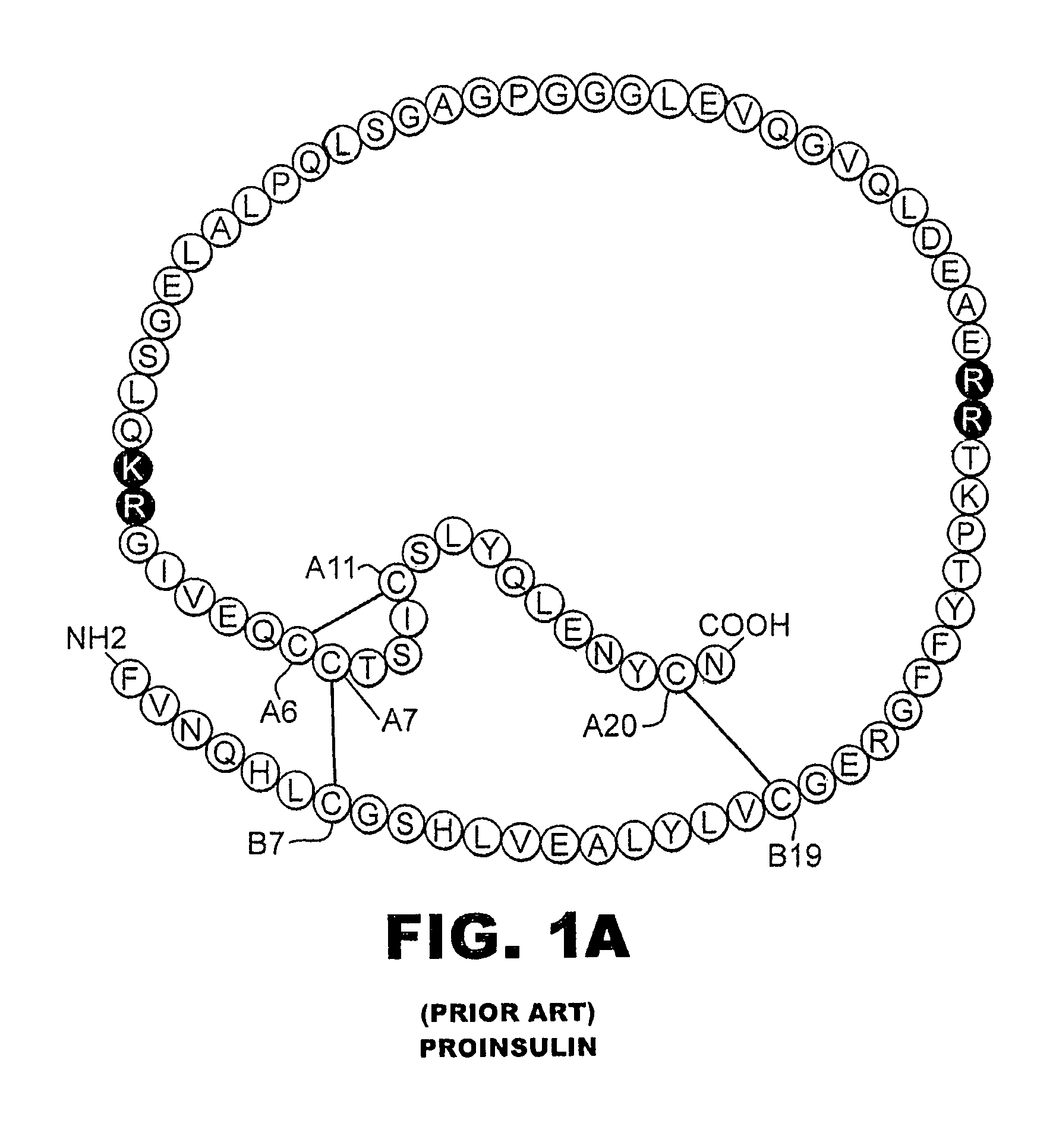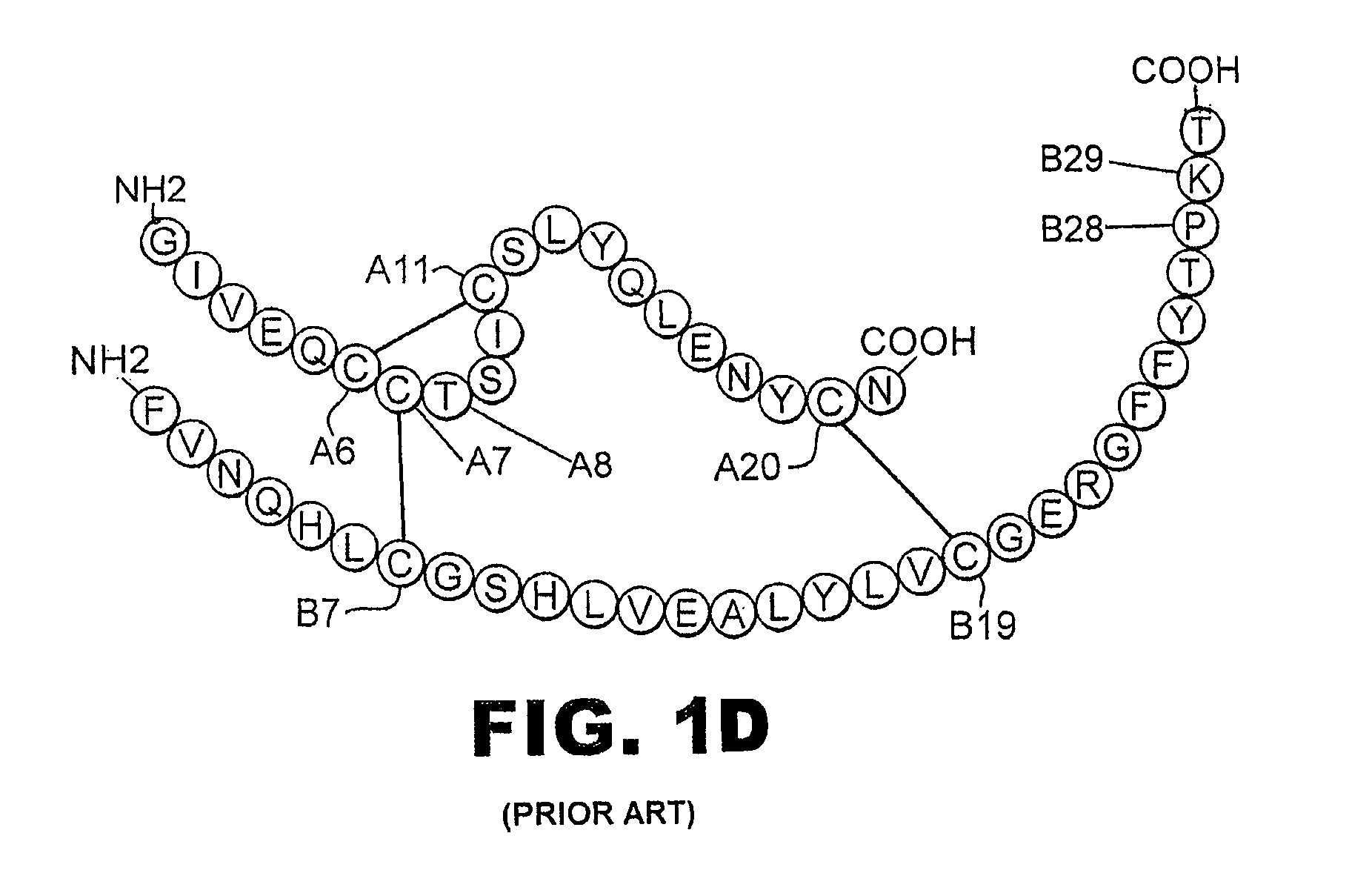Meal-time insulin analogues of enhanced stability
a technology of enhanced stability and insulin, which is applied in the direction of drug compositions, peptide/protein ingredients, metabolic disorders, etc., can solve the problems of reducing chemical and physical stability, reducing the shelf life of formulations at room temperature, and retarding but not preventing fibrillation of zinc-stabilized hexamers
- Summary
- Abstract
- Description
- Claims
- Application Information
AI Technical Summary
Benefits of technology
Problems solved by technology
Method used
Image
Examples
Embodiment Construction
[0035]The present invention is directed toward augmenting the thermodynamic stability of rapid-acting insulin analogues and their resistance to fibrillation to facilitate their use in treatment of diabetes, particularly their use in insulin delivery via implantable or external pumps. To that end, the present invention provides insulin analogues that contain an amino-acid substitution at position A8 of the A-chain polypeptide and an insulin B-chain polypeptide containing one or more substitutions, either currently unknown or known in the art, to confer rapid absorption following subcutaneous injection. Another aspect of the present invention is the use of amino-acid substitutions at position A8 to augment the stability of other classes of insulin analogues and to enhance their resistance to fibrillation.
[0036]The insulin analogues of the present invention may also contain other modifications. As used in this specification and the claims, various substitution analogues of insulin may ...
PUM
| Property | Measurement | Unit |
|---|---|---|
| pH | aaaaa | aaaaa |
| temperatures | aaaaa | aaaaa |
| temperatures | aaaaa | aaaaa |
Abstract
Description
Claims
Application Information
 Login to View More
Login to View More - R&D
- Intellectual Property
- Life Sciences
- Materials
- Tech Scout
- Unparalleled Data Quality
- Higher Quality Content
- 60% Fewer Hallucinations
Browse by: Latest US Patents, China's latest patents, Technical Efficacy Thesaurus, Application Domain, Technology Topic, Popular Technical Reports.
© 2025 PatSnap. All rights reserved.Legal|Privacy policy|Modern Slavery Act Transparency Statement|Sitemap|About US| Contact US: help@patsnap.com



